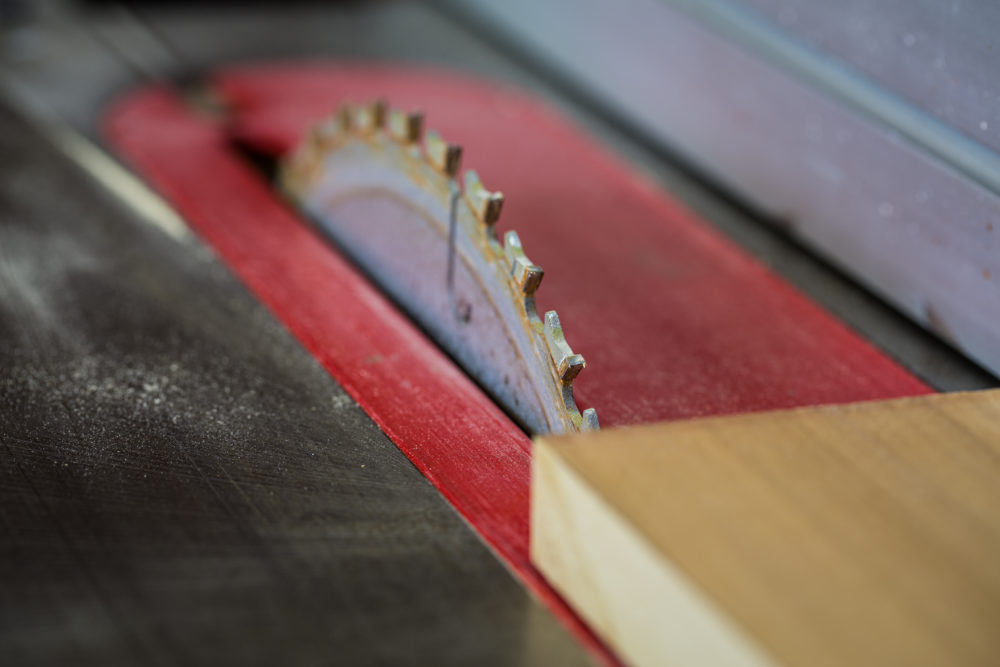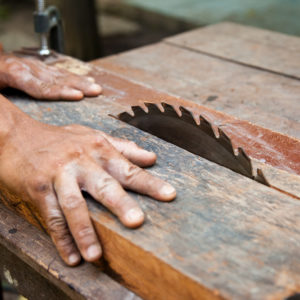Table Saw Lawsuit Alleges Injury Caused By Lack of Safety Devices

Redon Industrial Corp. and Power Tool Specialists, Inc. face a new product liability lawsuit filed by a Michigan man, which alleges that severe and permanent injuries suffered while using a Porter Cable table saw were caused by a poorly designed blade guard and a lack of flesh-sensing technology.
The complaint (PDF) was filed in the U.S. District Court for the Western District of Michigan by Maurice Brady, Jr. last month, indicating that the manufacturers should be held liable for the table saw injury due to an unreasonably dangerous design, which failed to incorporate available safety features.
The lawsuit alleges that the table saw had a blade guard that was extremely difficult to use, and thus is frequently removed by users. Even though the saw had a newer modular guard system, Brady maintains that it should have been equipped with an interlock that required the user to acknowledge that the guard is or is not in the protective position.

Learn More About
Safety Features Missing From Many Table Saws May Have Prevented Serious Injuries and Amputations.
Learn More About this Lawsuit SEE IF YOU QUALIFY FOR COMPENSATIONBrady also maintains that the table saw manufacturer should have informed users and the public that the new guard system was different and listed its advantages and detailed its proper use.
In addition, the lawsuit states that the defendants should have incorporated SawStop technology into the table saw, which would have prevented the plaintiff’s injuries by stopping the blade the moment it touched flesh.
“Defendants, and other table saw manufacturers, failed to pursue a license of the available SawStop technology or to incorporate similar technology into the Subject Saw,” the lawsuit states. “As a result, the Subject Saw had no flesh-detecting technology or other similar technology that would stop a spinning saw blade upon contact with human skin. Because it lacked such technology, the Subject Saw was unreasonably dangerous as designed and manufactured.”
The case joins a growing number of table saw injury lawsuits filed in recent years against table saw manufacturers, which claim that amputations, nerve damage and other problems could have ben avoided if the 20 year-old SawStop technology had been adopted by the industry.
According to a 2014 survey analysis (PDF) by the U.S. Consumer Products Safety Commission (CPSC), there are about 76,100 table saw injuries annually, based on 2007 and 2008 numbers. The injuries cost a total of about $2.36 billion per year, and leave about 3,000 people a year have with an amputated finger.
The CPSC has been investigating the possibility of new table saw regulations and voted unanimously in 2011 to look at potential new safety requirements. The 2011 survey and the 2014 analysis of the survey’s results were the latest steps toward new regulations.
Manufacturers have maintained that the additional safety measures would raise the price of table saws significantly, and in some cases may quadruple the cost of the tools. They also say that the safety features already standard on most table saws should provide adequate protection.
SawStop technology is one of the most likely features to be considered by federal regulators as a standard that should be on every table saw.
The technology senses when the saw is too close to a human finger and automatically shuts down the blade. The blade has a sensor system similar to technology used in touch lamps that detects electrical conductivity of the human body. At the slightest touch of human flesh, it instantly slams the table saw shut, which typically destroys the table saw due to the speed at which the device shuts down. At most, the victim would receive a slight nick from contact with the blades.
The Brady lawsuit accuses the defendants of designing a defective product, and negligence. it calls for compensatory damages for physical pain, mental anguish, physical disfigurement, physical impairment, medical care and treatment, as well as lost wages and compensation for the plaintiff’s loss of ability to engage in normal activities.
Get more articles like this sent directly to your inbox.
"*" indicates required fields






0 Comments